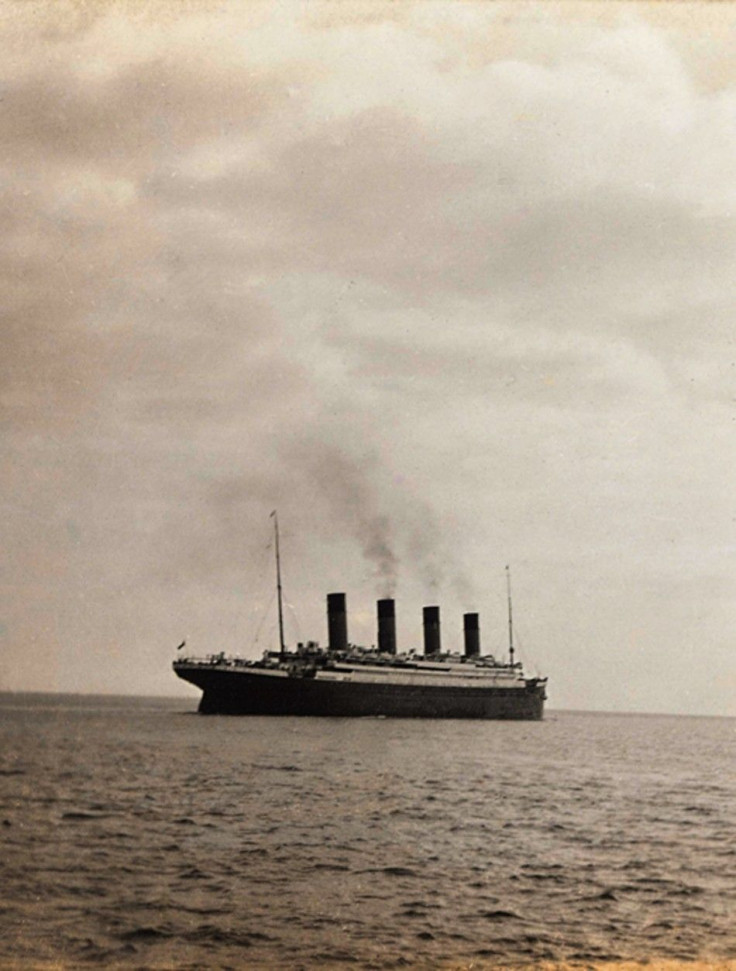Bacteria ‘Munching’ On Titanic Could Reduce It To Rust Heap In 30 years

The RMS Titanic, the luxury liner dubbed the 'unsinkable' ship, sank in the Atlantic Ocean on on April 15, 1912 - almost 100 years ago today. Since the tragic accident, the wreck has sat 12,000 feet (3,780 meters) under the Atlantic Ocean, where numerous divers have explored it and brought up artifacts from the fateful voyage. However, it's very unlikely the wreck will survive to make it to the 200-year anniversary, scientists said on Thursday.
A 1991 expedition to the wreck revealed what appeared to be icicles or stalactites made out of rust hanging off the ship. These rusticles typically only occur when iron oxidizes, but samples analyzed under an electronic microscope in 2010 showed that bacteria is responsible for disintegrating what's left of the ship, not chemical reactions. Recent estimates based on the rate of decomposition show that the ship won't be there much longer.
Although she can't say for sure how fast the bacteria is eating away at the iron, Henrietta Mann, who spent four years researching the bacteria, told Agence France-Presse that in approximately 20 or 30 years the wreck will collapse [into a] heap of rust.
The bacteria, 100 times smaller than the width of a strand of human hair, likely number in the billions, researchers said. They have never been seen anywhere else, opening up a host of further questions.
'We don't know yet whether this species arrived aboard the RMS Titanic before or after it sank, Dr. Bhavleen Kaur, who researched the bacteria alongside Mann, told the Daily Mail when the bacteria were discovered. We also don't know if these bacteria cause similar damage to offshore oil and gas pipelines. Finding answers to these questions will not only better our understanding of our oceans, but may also equip us to devise coatings that can prevent similar deterioration to our metal structures.
Christened Halomonas Titanica, the bacteria has been nibbling on the steel hull of the ship and reducing it into rusticles ever since it sank. The bacteria are also eating the ship's windows, stairways and furnaces. The only thing not being eaten is the brass.
The Titanic is 50,000 tons of steel, Mann told AFP. So there is plenty of food for my bacteria.
Steps are being taken to ensure future generations remember the Titanic. More than 5,500 items recovered from the ship were auctioned in early April, the winning bidder of which will be announced in the coming days. However, due to legal rulings, the collection must be sold as a single lot, not piece by piece, in order to ensure that the collection isn't fragmented and is around for future generations, Arlen Ettinger, president of Guernsey's, the auction house managing the sale, told NPR.
The court, in its wisdom, wants to make sure that there is a collection to represent the Titanic down the road, Ettinger told NPR. And although scientists may disagree how long it will take, they do agree that sooner or later there'll be no more wreck on the bottom of the sea. It'll be just rusted away and swept away in the currents. So this collection is, for all purposes, the Titanic. And the court simply wants to make sure it stays intact.
The buyer must also make the collection available for public viewing and research.
We just hope that it remains properly conserved and cared for and that the collection remains intact, Dominique Rissolo, executive director of the Waitt Institute, which was involved in mapping the wreck site, told CNN. We would prefer that it never enter private hands -- it's not about ownership but telling a story.
© Copyright IBTimes 2024. All rights reserved.





















